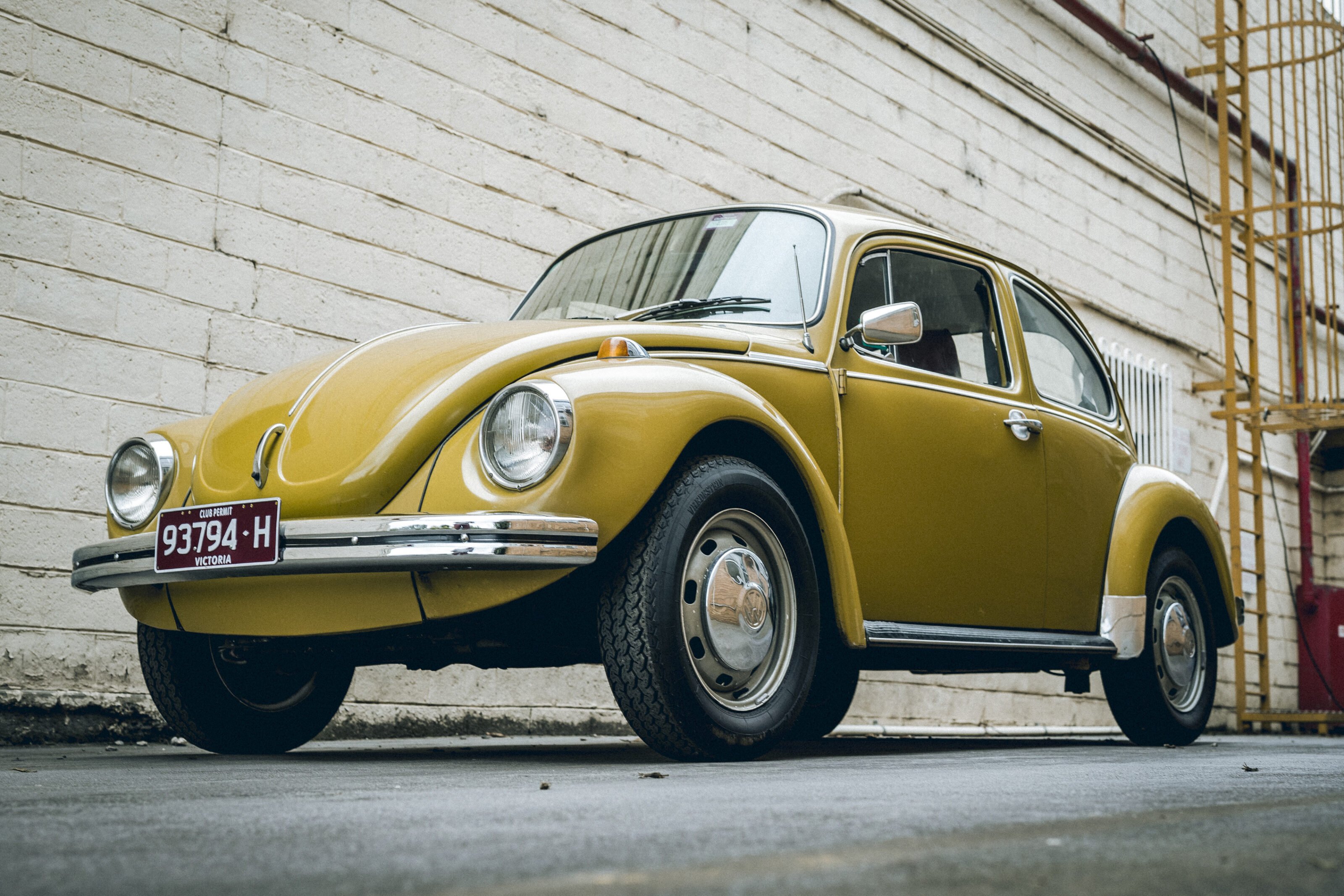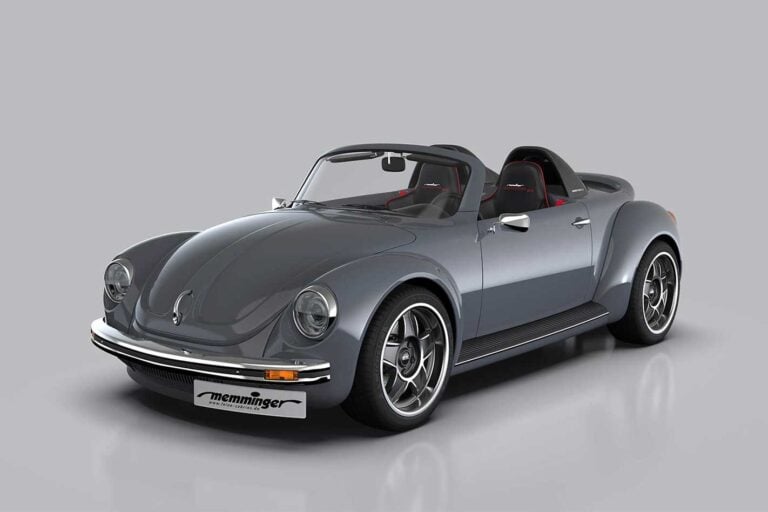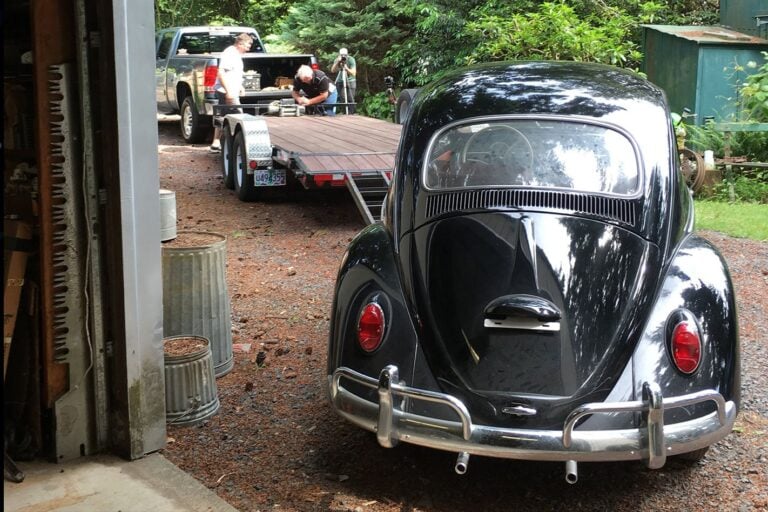If the point of a ‘modern classic’ is to refocus attention away from traditional automotive icons to more modern machinery, then the Volkswagen 1303 Superbug L (1973-75) sneaks its way in via a loophole. If any VW Beetle was ever going to be deemed modern, or even remotely ‘plastic’, it’s this final development of Wolfsburg’s original Type 1 wunderkind.
With its body swollen and reconfigured to accommodate the engineering required to make it roomier, safer, better to drive and better to crash in, the super-sized Superbug was prepped to face the 1970s like freshly flared denim in an Amco jeans commercial. Except that the Volkswagen take on things was driven by pragmatism, not vanity, and a desire to defy age by keeping on moving. The Volkswagen Beetle of the mid-’70s may have remained faithful to the air-cooled, rear-engined concept, but it was almost a completely different car.

Despite a mass-production heritage stretching right back to December 1945, you might be surprised to learn that Volkswagen had long been a proponent of annual model updates – not superficial, American-style makeovers, but of continual improvement. Throughout the ’50s, the Beetle saw three dashboards, three dramatically different rear window designs, different lights and two engine capacities. And that trend continued in the ’60s while preserving the same huggable Beetle shape.
But what happened in the ’70s made those mostly evolutionary changes seem like a drawn-out practice run for the Gladiator-style fight to the death facing the 1303 Superbug.
Australia was bitten by the Beetle bug early. Sales began in 1953, local assembly started the following year, and by 1960 the Beetle was our number two behind the FB Holden, selling a record 24,388 cars.

America was late to the Volksy party, but once the Beetle earned the Yanks’ affection, the US proved integral in building its enormous sales momentum throughout the ’60s, boosting global Beetle production beyond one million a year in 1965 and ’66, and again in ’68, ’69, ’70, ’71, ’72 and ’73 – topping out at a record 1,291,612 units (in 1971). Kombi aside, though, Volkswagen’s other models were fading, or failing, and brand sales were shrinking (from an historic high of 1.7 million, also in 1971).
It must have been a turbulent period for those making decisions inside VW, preparing for the transition towards water-cooling and front-mounted engines while seemingly providing life support for its number-one seller. But looking back on it, Wolfsburg’s air-cooled old-stager remained strong almost to the end. Annual global production didn’t drop below a million until 1974 (the year the Golf launched), yet it would take the Golf until 2014 to crack a million in one year!
If any VW Beetle was ever going to be deemed modern, or even remotely ‘plastic’, it’s this final development of Wolfsburg’s original Type 1 wunderkind.
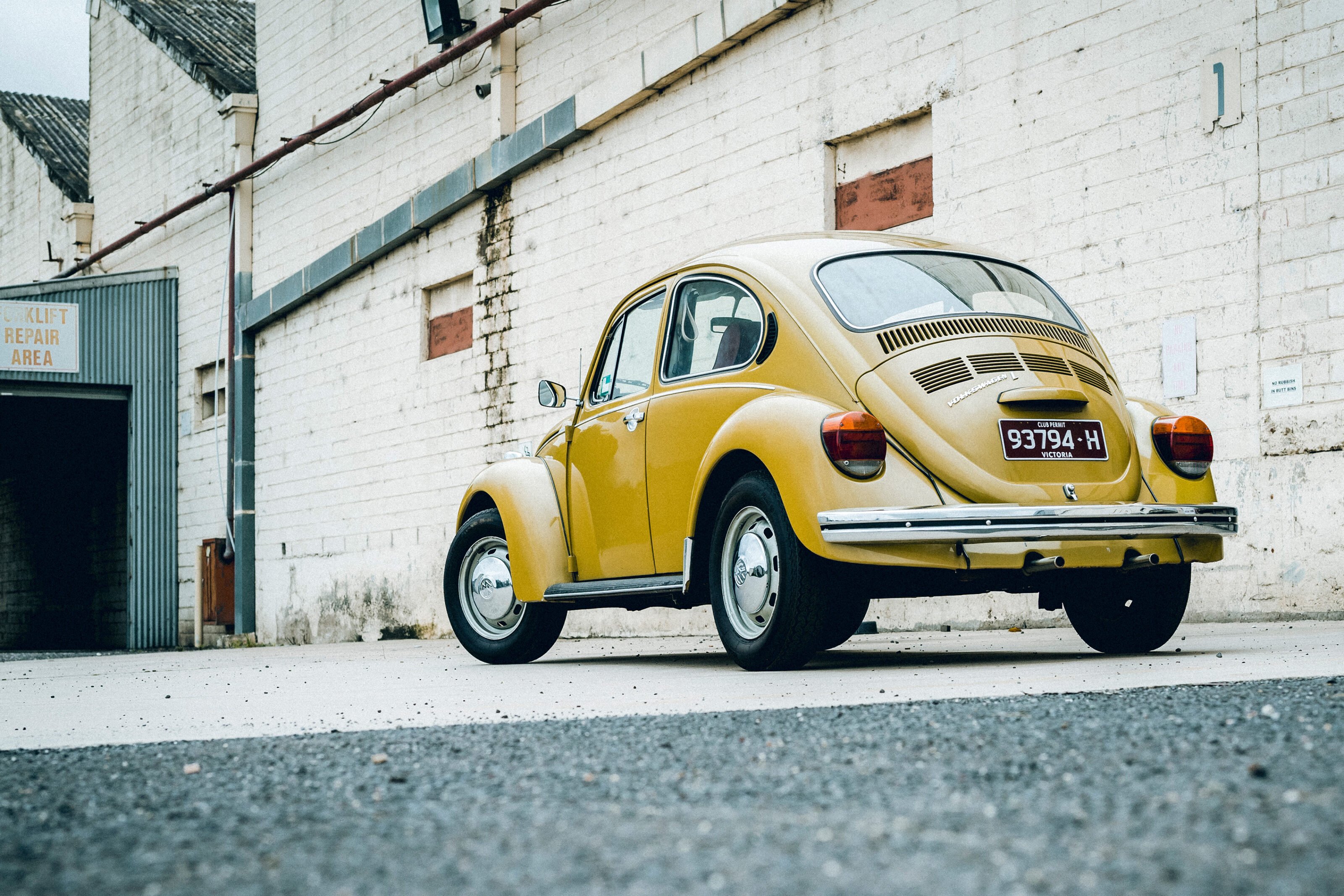
Prompted by increasingly strict US design regulations, the Beetle’s modern makeover began in 1971. The 1302 series (badged ‘Superbug S’ in Australia) hacked off the entire front end of the previous 1500 model from the windscreen forward, replacing it with a completely new design. Under the 1302’s bulgy new front lurked MacPherson strut suspension, a reshaped fuel tank to accommodate a new horizontally mounted spare wheel, an 85 percent-larger boot (well, there wasn’t much to start with) and a significantly smaller turning circle (by 1.4 metres).
At the other end, the Superbug S (which wore 1302 S badging in Europe, differentiating it from lesser 1302 models with smaller-capacity engines) scored an enlarged 1584cc flat-four and introduced proper semi-trailing-arm independent rear suspension with double-joint axles (while retaining torsion-bar springing), as opposed to the single-joint swing axles of previous manual Beetles.
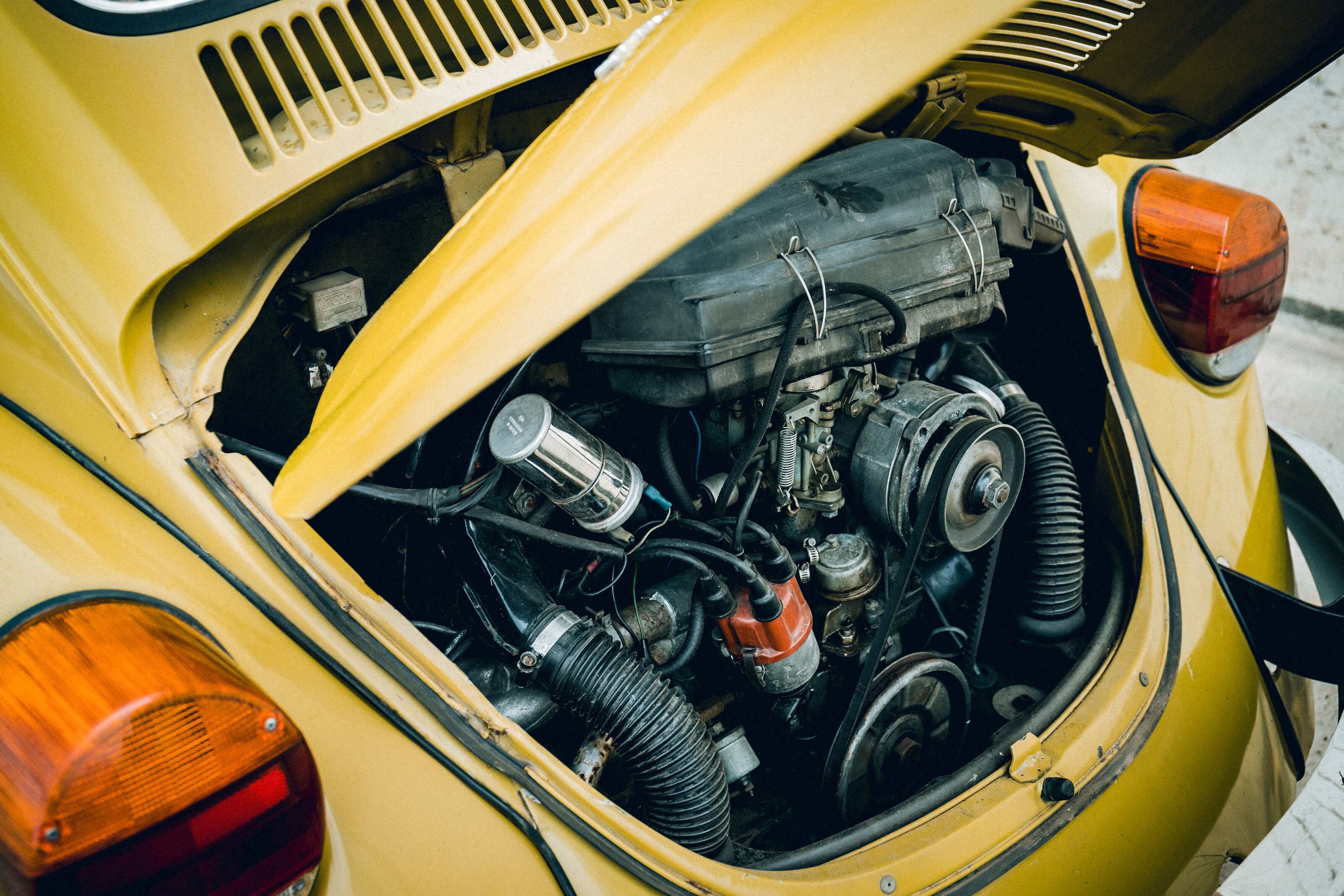
Lurking beneath the Superbug S in VW’s Aussie line-up, though, was a basic 1300 Beetle (re-introduced as a price leader in 1970), which revived drum front brakes (the 1500 Beetle had debuted dual-circuit discs in ’68), the previous torsion-bar front suspension design and rear swing axles, all of which it retained until its demise in mid-1975. So for much of the ’70s you could effectively choose from two very different Beetles – one significantly superior to the other, but each looking almost identical, badgework aside, to the untrained eye.
The Superbug S was updated in 1972 with a flat-faced four-spoke steering wheel, a column-mounted wiper stalk, an ignition lock, high-back bucket seats, extra engine-lid vents and a slightly larger rear window, but the biggest change happened in April 1973.
A massively curved windscreen with 42 percent more glass area replaced the marginally curved screen introduced in ’68, and it was joined by enormous ‘elephant’s foot’ tail-lights that could be seen from space. Dubbed Superbug L in Australia (and 1303 S in Europe), this 1303-series Beetle remains the pinnacle of Ferdinand Porsche’s original Volkswagen design.

While mechanically identical to the Superbug S, from the inside the ‘L Bug’ had transitioned into modernity. Gone was the flat metal dashboard (unless you bought the povvo 1300, in which case it was the same but cladded in plastic), replaced by an almost conventional padded dash, with side window demisters and just one prominent binnacle for a speedo with integrated fuel gauge and warning lights. This was joined by new rocker switches on the dash, in conjunction with the twist-to-operate plastic knobs and other plastic fittings that had slowly infiltrated the Beetle’s cabin since the ’68 1500.
Unlike the build perfection of earlier all-metal Beetle interiors, though, the L Bug’s dash plastics don’t seem to resist age so gracefully, and even a pampered example like this Martini Olive ’74 model can appear slightly ill-fitting. But it only takes one stint behind the wheel to realise the Superbug L is much more determined to remain on this earth in other areas, while keeping you alive with it.

You sit quite high in the narrow L Bug, exacerbated by the huge screen ahead that diminishes any ‘poor person’s 911’ fantasies. But once the driver’s blood is up, the Superbug proves far removed from the quirks and dynamic foibles that blighted Beetles of old. Its steering feels slower and heavier (there’s a full extra turn lock-to-lock, courtesy of a much tighter turning circle), yet there’s a feeling of planted precision – both in the way the Superbug points and how it sits on the road – that encourages you to keep pushing harder.
Obviously, physics win out at the end of the day, and having an engine mounted behind the rear axle is only ever gonna end one way – the 1302/1303 is no 992 911! But compared to the often dramatic snap-oversteer of the past, the semi-trailing-arm Superbugs were responsive, predictable and safe.
To its credit, VW maintained the dynamic rage right to the end. In 1974 the Superbug L scored updated front suspension with ‘negative scrub radius’ geometry, as well as an alternator, a shorter fuel pump, paper air filter and Porsche-style clutch. Then, in June ’75, the final batch of German CKD kits arrived for the Superbug L with new rack-and-pinion steering and bumper-mounted front indicators. And it’s this farewell 1303 model – the final development of a 40-year-old design – that remains both the finest to drive and one of the rarest. Five months later, the Superbug was no more.
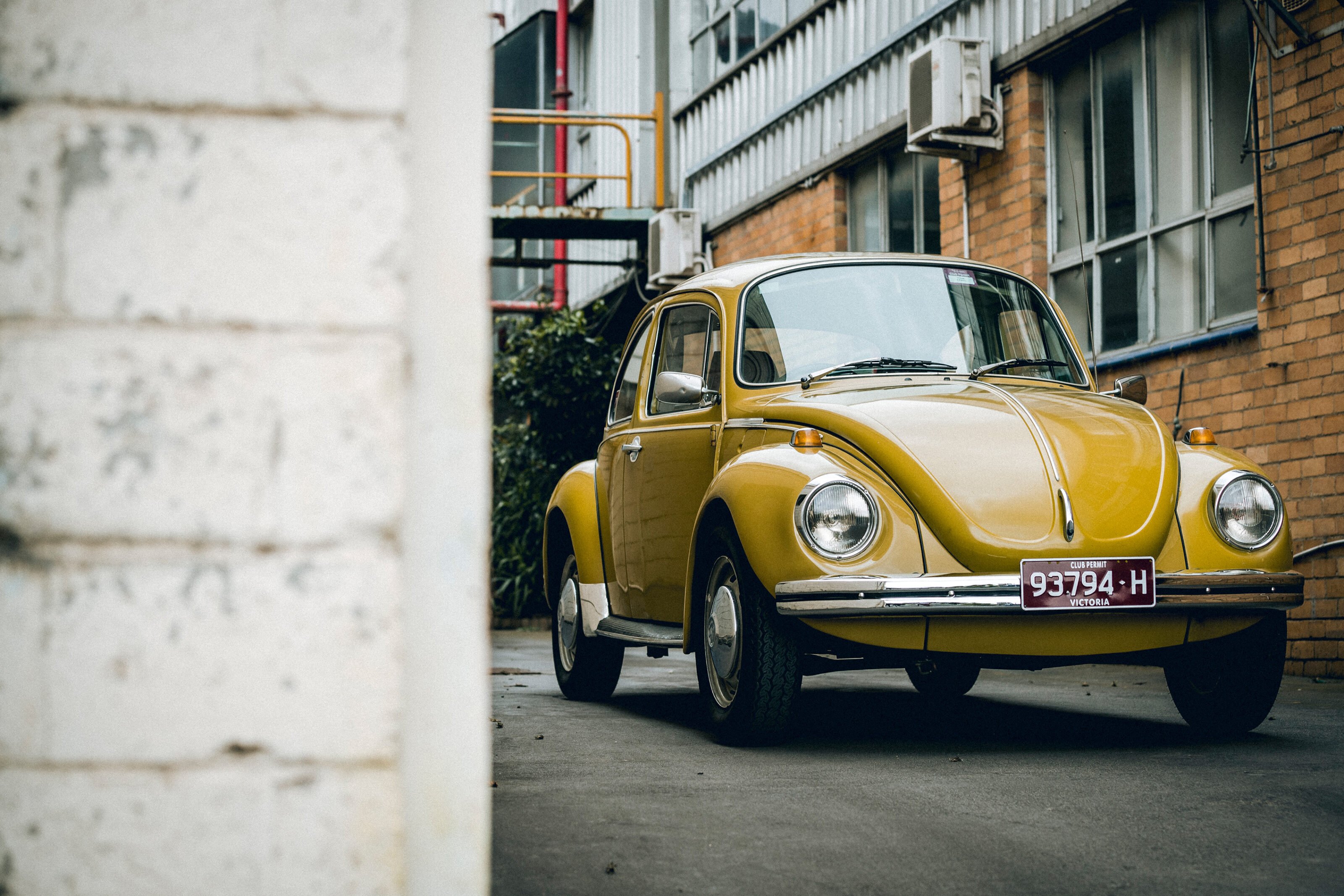
Of course, one of the great things about Volkswagen Beetle ownership is that so many have gone before, and so many know how to make them better, or faster, or simply keep them running. They’re a specialist design that requires specialist service, but if you’re mechanically literate you can easily perform basic maintenance yourself with the correct tools.
A decent set of tyres, some quality shocks (like Koni Classics) and, most importantly, some extractors to let the all-alloy air-cooled engine breathe can make any good-condition Superbug an effortless, rewarding and charismatic car to drive briskly. VW’s flat-four may not be a revver (unless heavily modified!) but its torque and astounding tractability remain a breath of fresh air, so to speak, even in 2021.
Compared to the often dramatic snap-oversteer of the past, the semi-trailing-arm Superbugs were responsive, predictable and safe.

In my humble opinion, you can look at the 1302/1303 Superbugs two ways. You can acknowledge the advancement of an antiquated design while perhaps dismissing the dilution of its design purity, or you can view it as arguably the world’s first post-modern car.
Not only did it take a charming, if ancient, car that was loved by millions and evolve it to the cusp of modernity, but it managed to do so with a radically different body shape that was somehow the same. The 1303 Superbug L became the blueprint for every iconic German car to this very moment, from progressive Porsche 911 generations to Volkswagen’s now-iconic Golf, the Audi TT, Audi Quattro and particularly the Mini. Retaining the essence of the past but making it work for the present, over and over again.
You’ll never drive a Superbug L 45 years hence and think it feels modern, but it doesn’t feel like a 1930s design either. In fact, it’s very much a car of the ’70s, albeit one finessed to within an inch of its life. And while the final Beetle may not be as pretty as an unadorned original – few classic cars are – it’s by far the finest of its breed.
1973 Volkswagen Superbug L facts
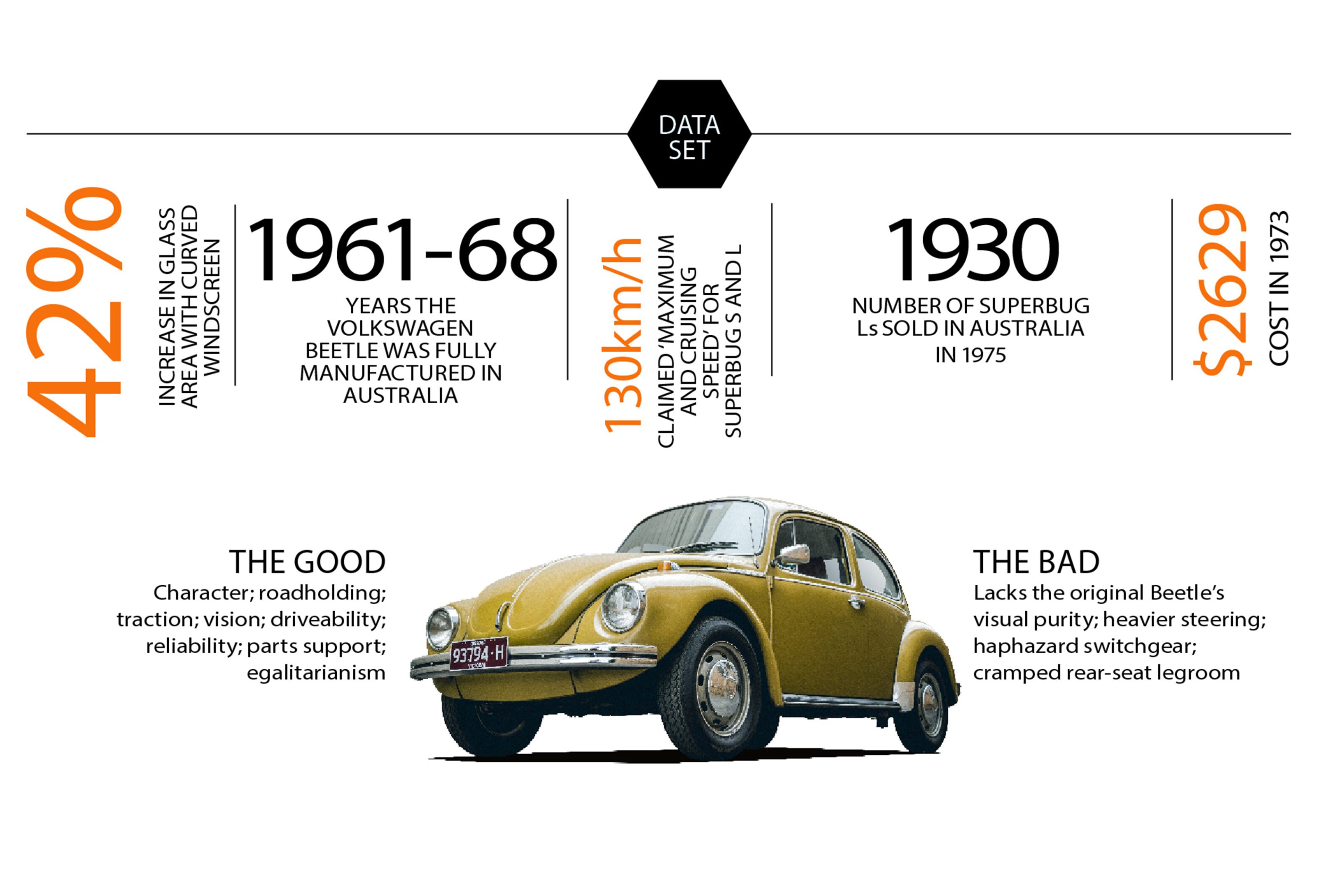
Fast Facts
DIFFERENT STROKES
Dimensional differences between the curved-screen Superbug L and the older-bodied 1300 base model were considerable. Not only did the L Bug have a much tighter turning circle (9.6m versus 11.0), it had a longer wheelbase (by 20mm), wider tracks (up 76mm front, 12mm rear), greater overall length (by 51mm) and additional weight (68kg more). It was also quicker (0-80km/h in a claimed 12.5sec versus 14.0), 6km/h faster and 1.3L/100km less economical.
NOT THE END OF THE LINE
While the Superbug L was the final development of the Beetle, it wasn’t actually the final Beetle. That distinction belongs to the 1976 ‘1600 Beetle’, still assembled from a CKD kit in Clayton, Victoria but comprised of a motley collection of parts. It mixed the 1300’s flat-screen body, flat plastic dash and torsion-bar front suspension with the Superbug’s 1584cc engine, front disc brakes and semi-trailing-arm IRS.
1973 Volkswagen Superbug L specifications
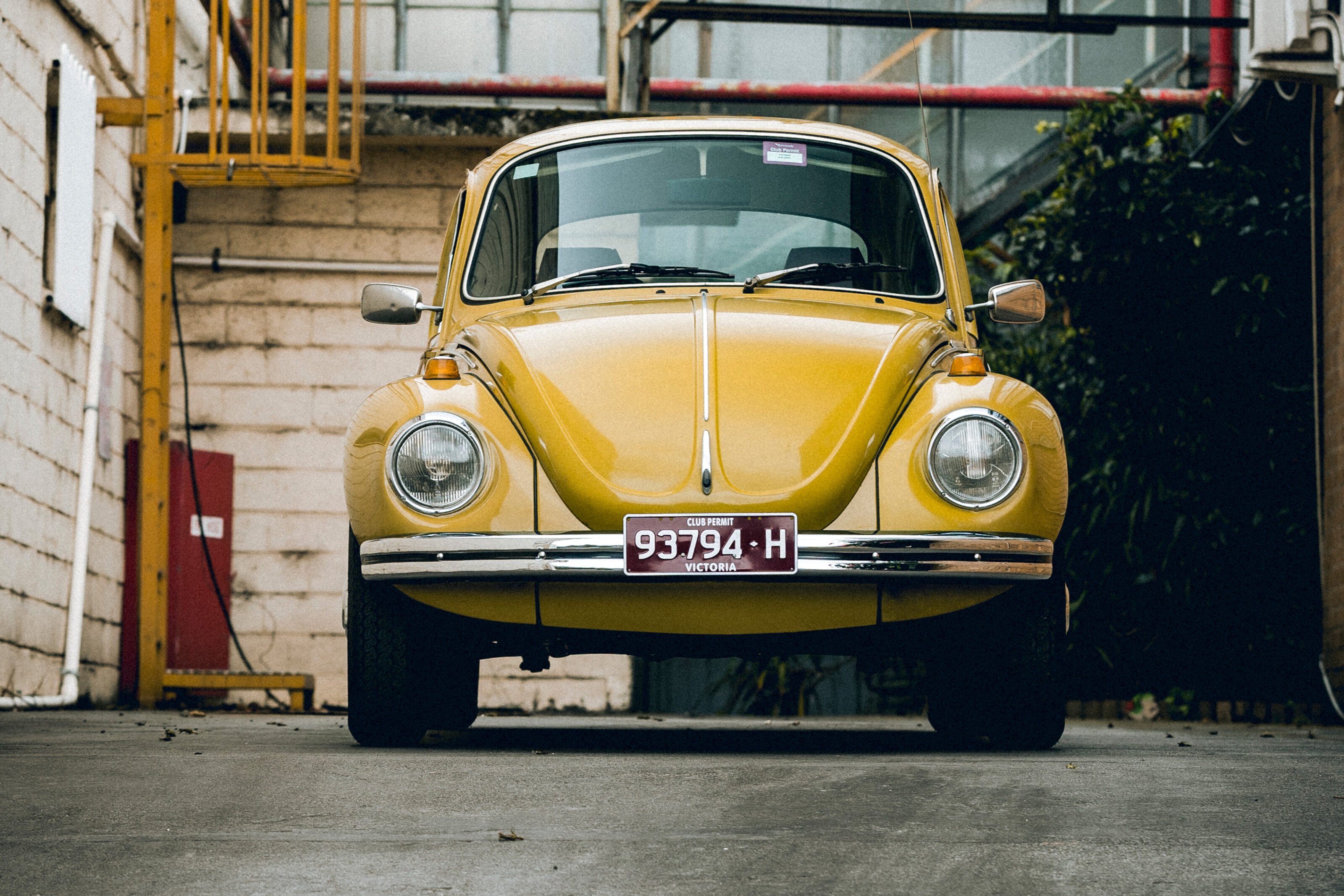
Engine 1584cc flat-4, ohv, 8v Max Power 45kW @ 4400rpm Max Torque 106Nm @ 3000rpm Transmission 4-speed manual Weight 890kg 0-100km/h 16.7sec (tested – May ’73) Economy 8.4L/100km (official claim) Price (now) $8000-$18,000

